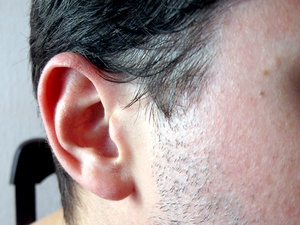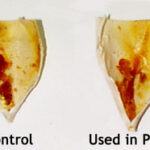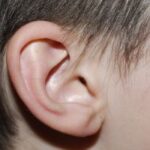For years, I have been a vocal advocate of evidence-based holistic health. I’ve spent much of my career glued to a glowing screen, learning about the safety, efficacy, and contraindications associated with specific practices within alternative medicine. Over the years, I’ve butted heads with my colleagues in the field, many of whom promote practices that I regard as deceptive. One such practice is “ear candling,” a popular technique used to clear wax, fluid, and debris from the ear canal.
I used to watch streams of customers come rushing into a lifestyle center where I once worked, begging to have their ears “candled.” They would shell out $50 to have one of my colleagues ignite a wax cone inserted in their ear canals. After a few minutes, they would open the cone, discover chunks of wax inside, and exclaim with delight that they “just can’t believe” the amount of ear wax that they had just removed.
I just can’t believe it, either. Common sense tells us that a cone made of beeswax, when set on fire, will melt within itself. Although the gunk inside the used cone may superficially resemble cerumen, or ear wax, it is in fact only melted beeswax. A study in 1996 clearly demonstrated that ear candling does not remove wax from a person’s ear canal, and every investigation since then has yielded similar findings.
Once ear candle manufacturers were forced to concede that their products were ineffective for cerumen removal, they switched their product claims– with some companies insisting that they equalize pressure to eliminate ear aches and fluid. This is also patently false, with the authors of the 1996 study stating, “Tympanometric measurements in an ear canal model demonstrated that ear candles do not produce negative pressure.”
Ear candles, to put it completely bluntly, do not work– at least, not in the ways that they are generally advertised. However, there might be a little wiggle-room for the realistic, evidence-based use of ear candles. Rita Schallenburg of the Wellness Institute in Toronto told NOW magazine, “I sell it as strictly relaxation. It can help with allergies, temporal mandibular joint syndrome, anxiety and hearing problems only if they’re not physical problems. The benefits come from the heat, the quiet, and it creates a vacuum.”
In other words, Schallenburg claims, ear candling can help to relieve discomforts caused directly by emotional disturbances. Much in the way that meditation might relieve a stress headache, or a soothing bath might settle a nervous stomach, the process of ear candling may help certain people to experience relief from hearing problems or muscle tension caused by stress. While I don’t support ear candling for this purpose, I acknowledge its potential benefit as a relaxation aid.
If you believe that your ear canal is infected, fluid-filled, or contains too much wax, your best option is always to contact your health care provider for advice on diagnosing and addressing the problem. While it’s possible that ear candling might help you to relax and meditate, it will objectively do nothing to support your ear health or hearing.




